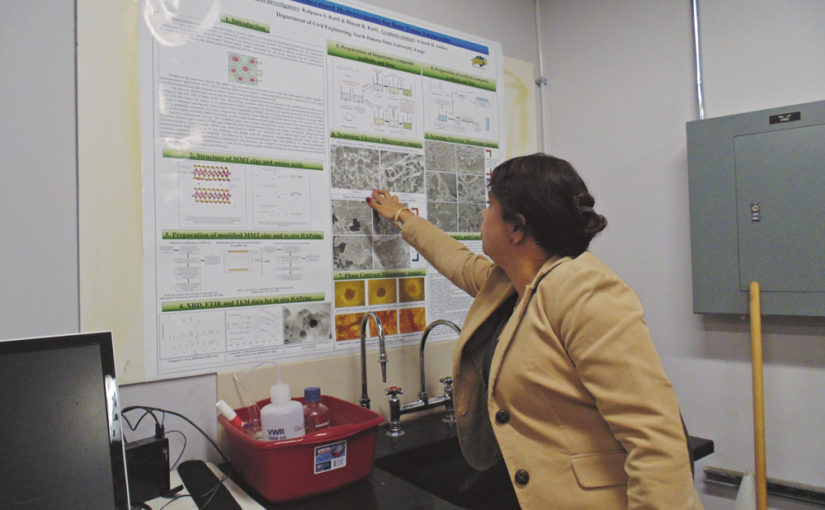Could the cure to cancer be in manufactured bone?
Kalpana Katti, a distinguished professor in civil and environmental engineering at North Dakota State, has been working with a group of other professionals in different areas to make her research a reality.
They’re working towards bone regeneration. To do this they use a mesh scaffolding that’s degradable after time passes and tissue engineering.
The scaffolding is made with nano clays that have been treated with amino acids to be sanitary and supportive to the body.
Then the scaffolding is seeded with cells from the patient, but at early stages in research they receive their cells from cell banks, the cells will then grow to the shape of the scaffold and the scaffold will degrade.
This is a step up from the current technology of bone replacement, which uses metal, ceramics and polymers.
“We are now replacing function rather than form, getting the body to grow it’s own tissue … the (grown) bone is biologically and mechanically identical to human bone,” Katti said.
The connection this research has to cancer is that several cancers metastasize to the bone. This can happen with even the most common cancers like breast cancer or prostate cancer.
“Once the cancer reaches the bone there is basically no cure, the reason a lot of the drugs and treatment methods currently used are mostly based on the primary cancer and don’t focus on the remote site. The reason for that is that we don’t have enough data for that remote site,” Katie said.
And how could they? Medical guidelines suggest it would be unethical to carry out daily biopsies on a dying patient. Inversely, who would get a biopsy daily to understand the progression of cancer? Katti’s research offers a way around this.
A problem past researchers have run into when trying to create a tumor in the lab is that a tumor can not grow in a petri dish; it needs a three dimensional environment.
Using Katti’s method, researchers can use the scaffolding to grow infected bone, creating a real life, real time, real tumor for scientists to study its daily progression.
“What’s special about our method is it creates the site of metastasis,” Katti said.
The new understanding to be gained from this perspective of literally growing a cancerous tumor is that it can be used as a medical tool, a study tool and a method of testing new drugs.
As a medical tool, it offers a unique view of each individual cancer cell, which can be poked, prodded and understood.
As a study tool, medical students can carefully inspect and observe the complexities of tumors in real life as they are growing, gaining knowledge no textbook can teach.
As a medical tool, the tumor growth not only offers a way to test new drugs, but to test which drugs work best for an individual. A patient’s cells can be placed directly into the scaffolding, grown and then treated with a series of medications, giving doctors the ability to experiment which drug is best based on that person’s genetic makeup.
This also means that testing on animals is greatly reduced, which further reduces the amount of money, waste and debates over human rights versus animal rights.
This option will be relatively low cost, millions of dollars instead of billions, which is what most research currently costs.
“We want to bring a predictive capability to understanding cancer,” Katti said, hoping that the end goal of the research will aid in the eradication of this disease.
This research is still in its infancy, and a lot of resources still need to be put in to complete what Katti hopes to be a new and unique answer to a universal problem, but the commitment is there from all specialties.
